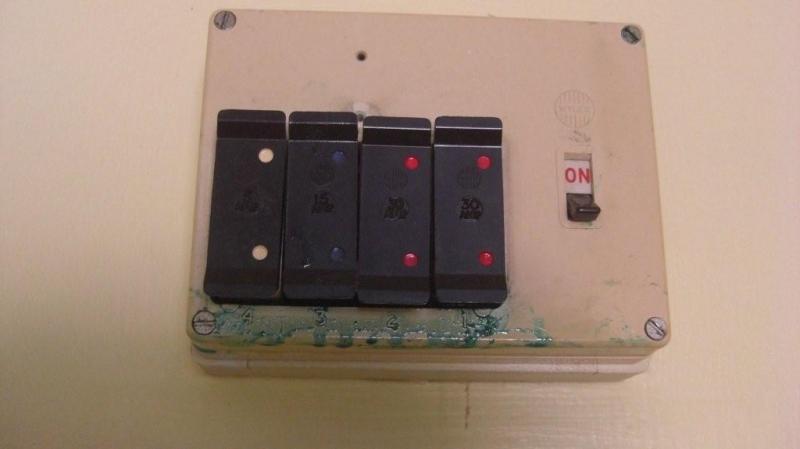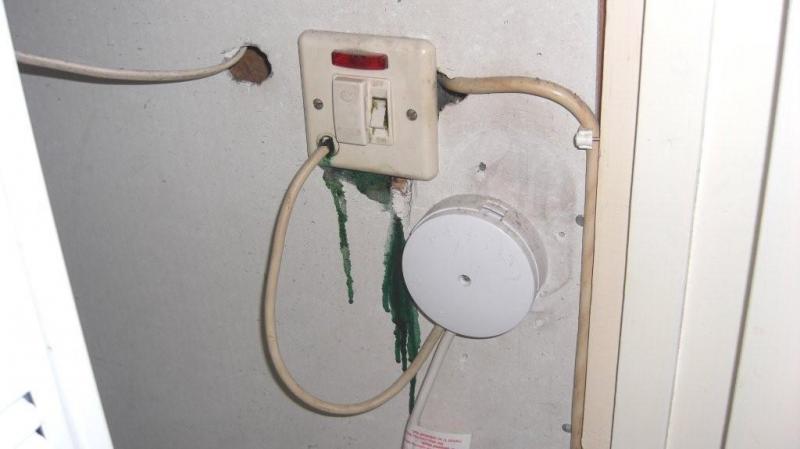It may be advised but I don't think there is "normal inspection and testing every 10 years" in many UK houses.
It has been debated between my son and I many times, the question should one wire or design with the idea that those who follow may not follow the rules? Be it splitting house side to side instead of up and down, or using light switch back box as a junction box instead of ceiling rose, there is the normal way, and the thoughtful way, which may not be the same, neither breaks the rules, but we have come to expect certain practices.
I feel you can't allow for some one in the future not following the rules or you would simply not wire anything, you have to wire and design with the expectation that those who follow will follow the rules, so people today with lights with no earth should have been made aware of the problem at least five times, within that time they will have redecorated so there is no valid excuse for not modifying, if they have failed to modify then that has been their chose so they can hardly complain that they can't use class I fittings.
So I suppose the question is how long does it take for the green goo to appear? If the cable was fitted in 1970 and the fault became apparent in 1980 then I can see why any supplier or installer would say you have not reported the fault within a reasonable time, so tough you can't claim now, there has to be some time limit, can't really expect the Italians to come and repair Chester's Roman walls. Maybe today it is different but years ago if you got a trade discount then the cost of replacing was down to you, so if you bought an alternator which proves faulty at trade price, then you could return it and get a replacement, but you would not get the labour needed to change it FOC only the alternator.
So if you returned the cable with green goo they may replace the cable, but would not install the cable. And it is not the cost of cable that's the problem, it's the cost of labour to do the work. And cable is considered to have a limit to how long it will last, in the 1950's the rubber cable had quite a short live span, in the 1960's and 70's although the cable was expected to last longer, I don't think anyone expected cable to last 45 years plus, and items like light bulbs have an expected life which is the point where half the bulbs will have failed not when they should all still be working.
At the time when we had cable in the UK which could give out green goo we really did not know that much about plasticiser and how it would act over the years, but the Infinity/Olsent cable was produced when all manufacturers should have known about the problems. So yes the Infinity/Olsent cable was in essence a manufacturer trying it on in the same way as VW did with their cars and emissions. It was a criminal act rather than part of a learning curve.
The question is what to do about the cable? Now if an EICR was done and it failed to find the faulty cable, then there is a case for claiming from person doing EICR. But trying to show that the goo was there when it was inspected would be hard, so in real terms I think unlikely to get anywhere with that, so in real terms it's really down to owner to replace cables. I I had some cables in my dad's old house which were faulty, but it was by no means all cables, however testing to find which cables do need changing and which do not would be hard. Today we should have a paper trail, so cable in living room wall feeding the gas fire ignition system should have paperwork to say it was fitted by Joe Blogs in 1998 connecting into the ring final at upstairs socket directly above the fire. But the active word is should, I have just had a part re-wire, I know what bits they did, but you would have a hard time working out what they did from the paper work. Today I would be able to point out what they did, in 5 years time it would be harder, in 10 years time near impossible. Paperwork says they installed a ring final, but it does not even say how many sockets were on it.
So it would seem you need a re-wire and your going to have to pay, next question is how long will it wait? Near impossible to tell how long before the plasticiser has reduced to point where cables will crack and cause tracking, again looking at dad's old wiring it was to a stage where we could not get a RCD to hold in, so likely with a 30 mA RCD it will trip before it becomes a fire risk, but one can't be sure about that, now if a central heating pipe starts to leak the insurance will not normally pay out, but if it leaks and causes damage they often will, the point between paying for it all and paying for part seems to vary, and maybe insurance will pay out, but if you ask and they say no, then you will have to re-wire immediately so is it really worth asking? All will it just cause more problems.
The big question is:- Is the house habitable with the faults? If you can disconnect the faulty cables then likely yes, if not then for insurance to pay you need some one to stick out their neck and say house not habitable until repairs are completed. And still at mercy of the insurers, seems daft but people with money can take the chance, those without the ready cash have more of a problem.




